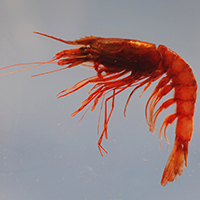Exploring relationships between the distribution of giant red shrimp Aristaeomorpha foliacea (Risso, 1827) and environmental factors in the Central-Western Mediterranean Sea
Relationships between distribution of giant red shrimp and environmental factors

Submitted: 7 November 2020
Accepted: 15 December 2020
Published: 30 December 2020
Accepted: 15 December 2020
Abstract Views: 1059
PDF: 405
HTML: 0
HTML: 0
Publisher's note
All claims expressed in this article are solely those of the authors and do not necessarily represent those of their affiliated organizations, or those of the publisher, the editors and the reviewers. Any product that may be evaluated in this article or claim that may be made by its manufacturer is not guaranteed or endorsed by the publisher.
All claims expressed in this article are solely those of the authors and do not necessarily represent those of their affiliated organizations, or those of the publisher, the editors and the reviewers. Any product that may be evaluated in this article or claim that may be made by its manufacturer is not guaranteed or endorsed by the publisher.


 https://doi.org/10.4081/aiol.2020.9471
https://doi.org/10.4081/aiol.2020.9471



